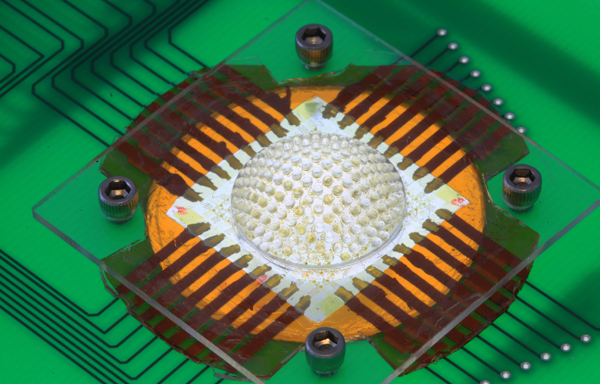
A new digital camera inspired by the compound eyes of some insects has a curved, dime-sized array of tiny lenses.
 A new digital camera may change the meaning of bug-eyed. Inspired by the compound eyes of certain ants, beetles and flies, engineers have developed a digital camera that, thanks to 180 tiny lenses, is capable of panoramic views. Such cameras might soon bedeck tiny flying robots that could scour a disaster site for survivors or conduct other aerial surveillance.
A new digital camera may change the meaning of bug-eyed. Inspired by the compound eyes of certain ants, beetles and flies, engineers have developed a digital camera that, thanks to 180 tiny lenses, is capable of panoramic views. Such cameras might soon bedeck tiny flying robots that could scour a disaster site for survivors or conduct other aerial surveillance.
When light strikes the new camera, it passes through a curved rubber compound lens about the size of a dime. The surface of the lens is actually 180 smaller lenses that guide the light to a layer of detectors at the camera’s back. Each lens gathers a portion of the scene and these segments combine into one panoramic image with everything in focus.
Constructing the camera is relatively straightforward and doesn’t require special materials, the team reports May 2 in Nature. While the lenses on the current version approximate the relatively low resolution achieved by a fire ant’s eye, the 20,000 lenses of a dragonfly eye should be doable, says study coauthor John Rogers of the University of Illinois at Urbana–Champaign. Rogers has his sights set even higher: “There’s no reason to stop at what’s been demonstrated in the biological world,” he says.

 Previous page
Previous page Back to top
Back to top







